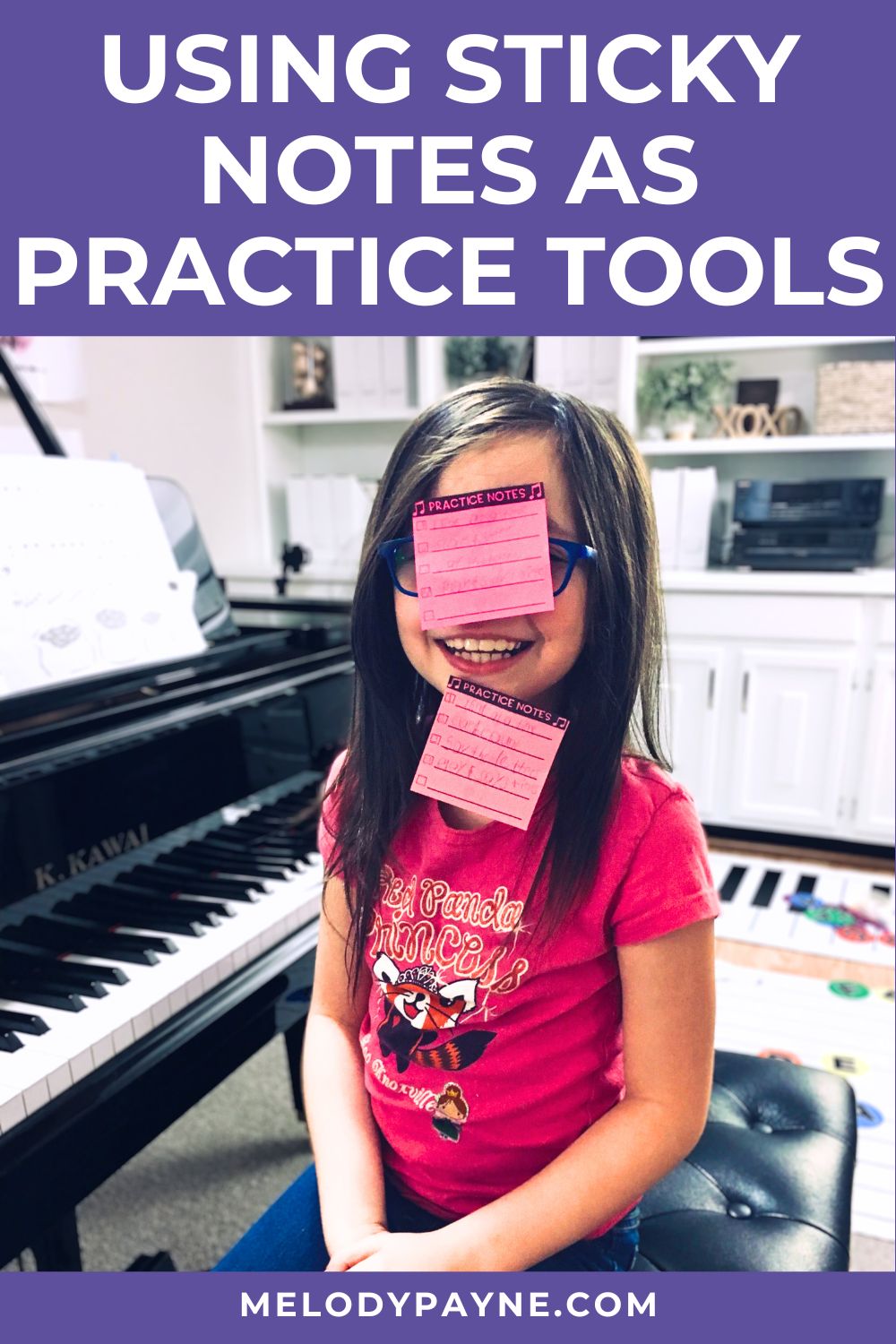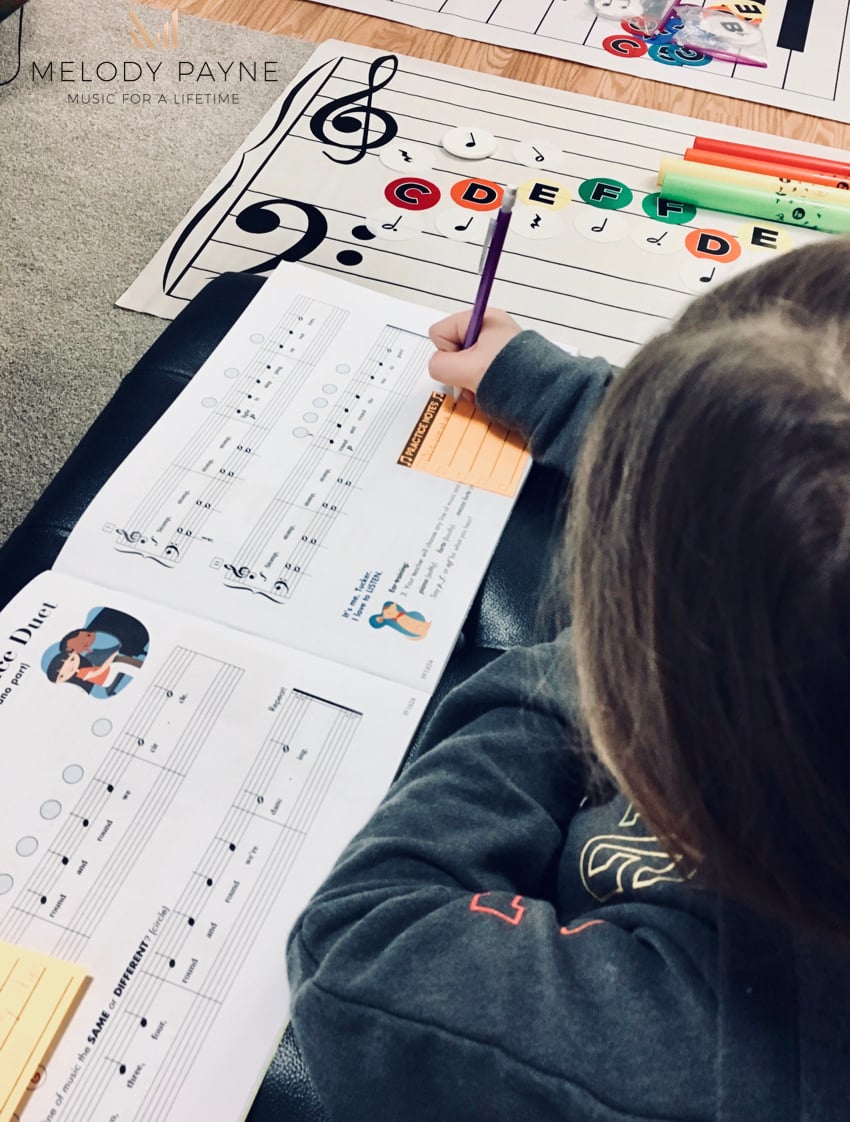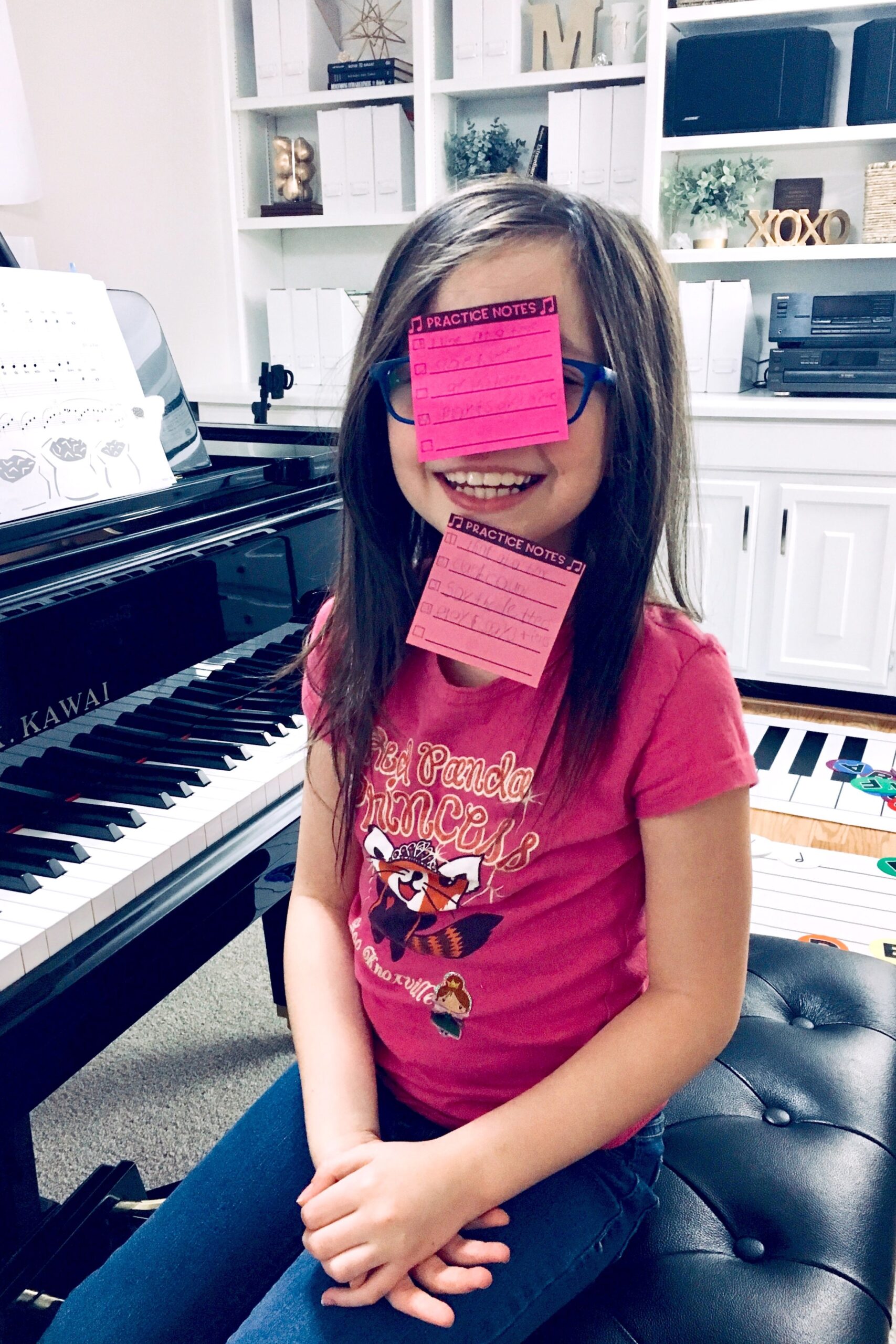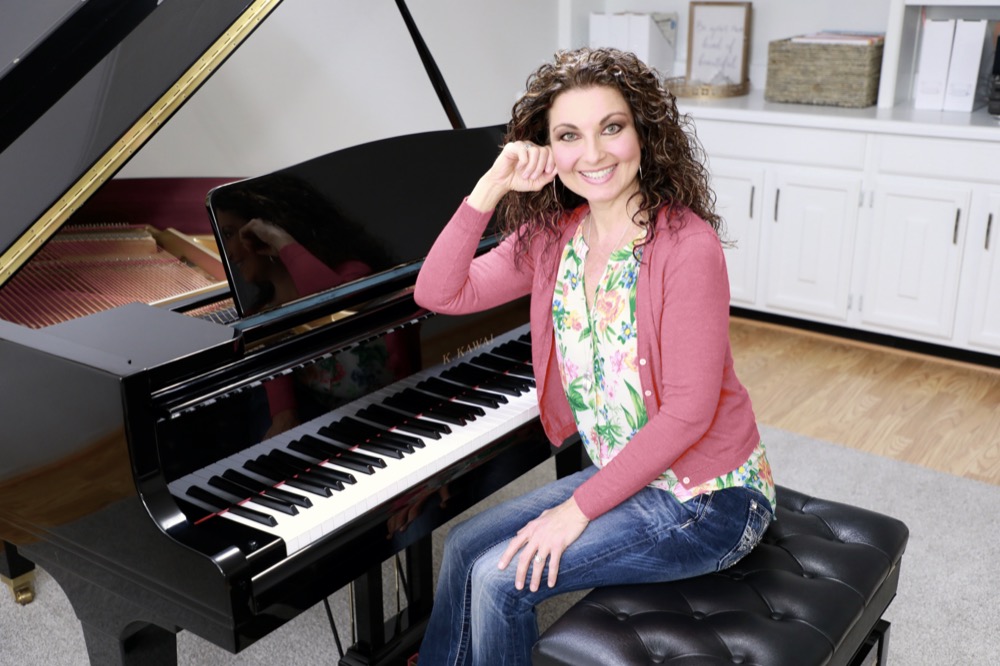Using Printable Sticky Notes As Practice Tools in Piano Lessons
This post may contain affiliate links. If you purchase something through an affiliate link, I will receive a small commission at no cost to you. For more information, read the disclosure statement here.

Printable sticky notes in piano lessons can give our students a tremendous amount of ownership over their own piano practice sessions.
Quick, easy, customizable sticky notes work for scales, solo repertoire, theory, recital prep, and so much more!
Students are eager to follow their own practice steps, which makes practice time more effective and efficient, and the real bonus is that students come to lessons more prepared than ever!
Keep reading to learn how to incorporate this useful and fun tool into your own music teaching.
How it Began
I was intrigued by an article I read that was written by Barbara Kreader Skalinder for Clavier Companion Magazine, “Whose Assignment Is It Anyway?”¹.
Barbara had come to the realization that she was the one doing all the work writing her students’ piano lesson assignments, while her students were playing with her pet!
She was the one doing all the work, and the students weren’t even reading the assignment sheets! (insert empathetic nod from me!!)
Her solution? She started having her students write their own assignments during piano lessons, and I’m here to tell you, it works!
When I was a piano major in college, I wrote my own assignments as an undergraduate and graduate student, but never as an elementary, middle, or high school student.
Since becoming a teacher myself, I’ve always written or typed my students’ lesson notes, but Barbara’s article, along with some research being done on using laptops for taking notes vs. writing notes by hand², made me think otherwise and I was interested in doing a little experiment with her idea plus one of my own.

Printable Sticky Notes
I have been wanting to create a template to print onto 3×3 sticky notes for awhile (these Super Sticky Post-its are my favorites), and I thought this would be the perfect opportunity to try both of our ideas at the same time: printing onto sticky notes, and having my students write their own practice notes onto them, with a separate sticky note and specific practice ideas for each piece.
Even the 6-year-olds are writing their own notes!
Of course it takes a few minutes out of each lesson, and their practice steps are very basic, but the notes that are hand-written by my students are making quite the impact on their self-guided practice sessions!

Why is it important for students to write their own practice notes?
The following quote from Barbara’s article resonated soundly with me: “Only when he actually wrote out the word himself did the [my] suggestion finally sink in.”
In other words, we can work with our students on practicing over and over again, write succinct or detailed practice assignments, and hope for the best, or we can have our students write their own practice notes, which makes them much more likely to follow them!
One mom in my studio said that having her daughter write her own assignment has given her much more ownership over her practicing.
This newfound ownership is making a huge difference in her practicing, much more than when she followed the typed weekly assignment sheet that I emailed to her mom to print out and help her follow.

What do my students write on the sticky notes?
I lead my students to write their own abbreviated practice steps onto the sticky notes.
Steps can include anything from specific measures, number of repetitions, brief practice steps such as clap and count; or musical aspects of the piece that need to be developed further, such as shaping phrases, dynamics, etc.
Check out some of our actual practice stickies in this photo!

I do still type and email specific lesson notes to parents after each lesson using My Music Staff.
I include details such as what pieces to practice, page numbers, flash cards, workbook pages, etc., plus detailed assignments of how to practice, or specific aspects to address and improve during practice sessions.
Encouraging Sticky Notes
I also enjoy giving encouraging sticky notes. My students love them, and they’re a great way to show appreciation for a great week of practice, extra hard work during a lesson, an exceptionally fun lesson (I gave “You’re a LLAMA fun!” to a student yesterday after he rocked his recital piece, and he loved it!), to encourage students who are struggling, as a fun bit of encouragement before a recital, and more!

The Results
- Practice sticky notes are working really well for the vast majority of my students, and especially well for a few students who were having trouble establishing good practice habits.
- My students actually follow their own directions!
- Keeping their own practice notes short and simple made my students WANT to follow their notes AND check them off when completed.
- Several of my students have become more independent practicers (and if this doesn’t do the trick, then check out How To Host A Piano Practice Challenge)
- One student even loves making fashion statements with her sticky notes. I suppose the tips will sink in by osmosis? 😁

How to Print on Sticky Notes
- Print the template page. Take note of which direction your paper runs through the printer (the word “top” on the template will help you).
- Place the template page back into your printer tray and print one test page of pre-made designs. Again, take note of which direction your paper runs through the printer (the word “top” on the template will help you). I have to feed my template page back into my printer face down, “Top” side first.
- Stick a 3×3 sticky note onto each square.
- Place the page back into your printer.
- Print all the sticky notes you need!
- Once you get the hang of it, it will take only seconds to have a fun set of stickies to share with your students!
References
- Barbara Kreader Skalinder, “Whose Assignment is it Anyway?” Keyboard Companion. Vol. 11, No. 1 (January/February 2019): 42-43.
- Pam A. Mueller & Daniel M. Oppenheimer, “The Pen is Mightier Than the Keyboard: Advantages of Longhand Over Laptop Note Taking”, Psychological Science. (April 23, 2014).
Other fun piano teaching resources you’ll like:
Don't miss out!
Follow on Facebook and Instagram, join the best Facebook group for piano teachers, and subscribe to the newsletter to get helpful teaching tips, resources, and tutorials delivered straight to your inbox every week.
Melody Payne
Melody Payne
Welcome!

Hi! I’m Melody Payne, a pianist and piano teacher, educational resource author, a fun-loving wife to the most wonderful and talented hubby I could ask for, and a lifelong learner who loves to share. I want to make your life as a music teacher easier by writing and sharing helpful and relevant music teaching articles, and by creating educational resources with your very own students in mind. If you are a parent who wants to enroll your child in piano lessons, I’d love for us to get started building those skills that can give your child a lifetime of musical enjoyment!


This Post Has One Comment
Pingback: Friday Finds #192 An Autumn Playlist - Piano Pantry